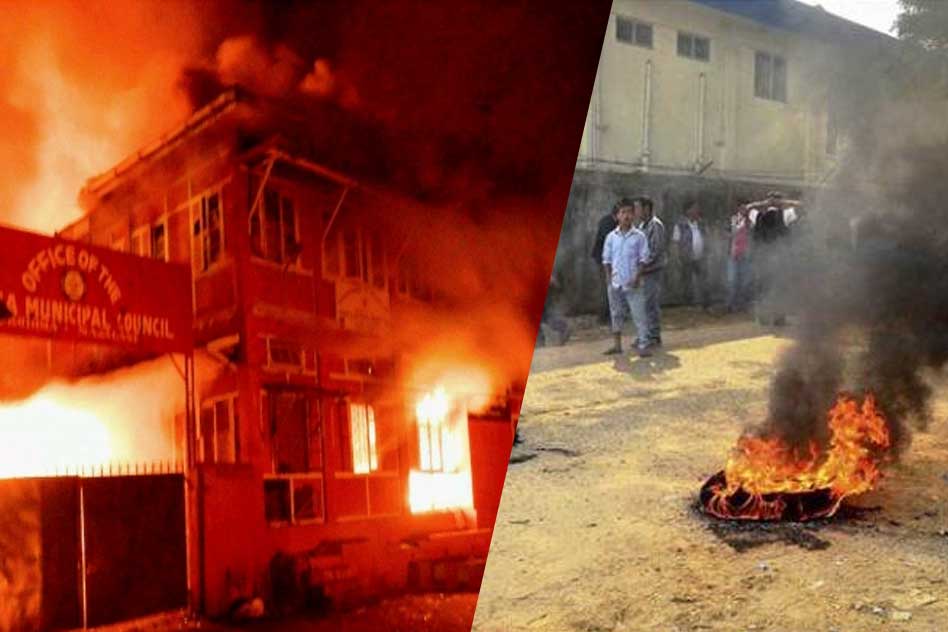
All You Need To Know About The Violence In Nagaland Following The Demand Of Civic Polls
3 Feb 2017 1:24 PM GMT
Fresh violence erupted in Kohima, the capital of Nagaland, on Thursday, 2 February as a large mob went on a rampage burning down several government properties and vandalising vehicles as a mark of protest against Chief Minister TR Zeliang who refused to meet their demands on the civic polls.
More than 1,000 tribesmen took to the streets armed with spears and machetes and torched the offices of Kohima Municipal Council, Regional Transport Office and the Disaster Management Authority of Nagaland. Besides, the mob also set fire to several government vehicles.
Here’s how the tension unfolded in Kohima
On December 2016, the Nagaland government announced the elections of the civic bodies which was followed by the announcement of 33 per cent reservation of seats for women. Following the decision, various tribal organisations including the Naga Hoho began to oppose the elections that were supposed to take place on 1 February. They believe reservation for women is against the Naga customary laws and tradition which are protected under Article 371(A) of Indian Constitution.
Naga tribal organisations, united under the Joint Coordination Committee (JCC), called for bandhs and other forms of agitation to oppose the 1 February elections to urban local bodies. The agitation took a violent turn on 28 January as it reached Kohima.
However, an article in a local newspaper, Nagaland Post claimed that the protests were going on against the government for not fulfilling its promise of postponing the elections and giving two months of time to the government, the women and the tribal to fix a meeting and arrive at a decision.
The main reason why the Elections were boycotted was indeed the concerns and challenges in the Naga context vis-a-vis conflicting interests between the Municipal Act and Article 371A.
The violence erupted because despite the NBCC (Nagaland Baptist Churches council) striking a reconciliatory deal between the Govt of Nagaland and the JCC and postponing the elections by two months, the govt. breached the deal and lost the trust of the people
On 28 January, a 12-hour bandh was called by several tribal groups in Dimapur. Other organisations in different districts had also called for the bandh. Amidst mounting tension, violence broke out causing deaths of two people and injuring several others. The local government, on 31 January declared to postpone the municipal elections indefinitely.
After the 28 January violence, the Home Ministry sent central forces to contain the law and order situation in the state and even imposed Section 144 in Dimapur and Kohima districts. A majority of the candidates have already withdrawn their names from the election following the pressure from the tribal groups.
The violence on 2 February was to demand the resignation of the Chief Minister.
According to officials, the government has shut down Internet and mobile data service to stop the spread of rumours through social networking sites.
Zeliang has rejected the demand for his resignation and has appealed to the people of the state to stop the violence and not pay heed to rumours.
 All section
All section













